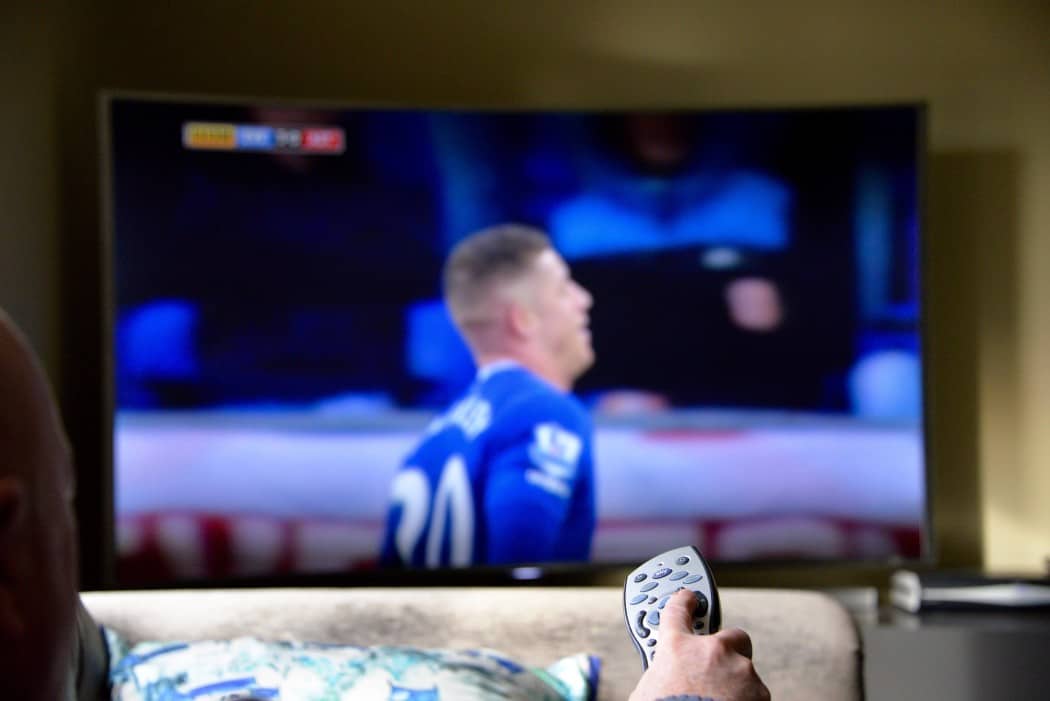Around 2010, major consumer electronics manufacturers launched 3D product lines and marketed them as their best TVs. But since then, the eye-popping hype of 3D television has shriveled. However, many projector manufacturers still market 3D options, and today we’re comparing 3D Projectors vs 3D TVs. And for those interested in 3D televisions, we also have a great resource that compares 3D ready vs 3D TV.
KEY TAKEAWAYS:
- Many modern projectors allow viewers to simulate a 3D theater experience by offering large screen sizes.
- 3D TVs typically have a high-quality HD resolution but are often expensive and limited in size.
- On top of a TV or projector, an at-home 3D setup requires special 3D glasses along with a 3D feature Blu-Ray player and Blu-Ray 3D movies.
Comparing a 3D TV vs 3D Projector
A 3D viewing experience takes ambition to pull off in one’s personal living space, but done right, 3D movies can be spectacular. Both types of 3D content — projector and TV — are similar in that they offer a more immersive viewing experience, but they also have their differences.
Insider Tip
Remember that you need to buy a Blu-Ray player capable of 3D to play 3D films. You’ll also have to purchase special 3D Blu-Ray discs.
Projectors typically provide users with larger screen size and usually come with the option to toggle between a 2D and 3D experience. Meanwhile, 3D televisions have a higher visual quality and last longer than projectors. We also have an article that further explores 3D TV displays, comparing 3D TV active vs passive.
Below, we’ll wade into the specifics of multiple points of interest and hopefully get you closer to knowing what’s right for you.
Display Quality
When considering display quality for 3D content, there is more at stake than vibrant colors and deep black levels. The 3D cinematic experience comes mainly from a feeling of immersion within the universe displayed on the screen, which is a challenge for a small or medium-sized display. This need is why a video projector is the better option for watching 3D movies at home.
TVs often have a wide color gamut and provide a better HD resolution than a video projector. As such, TVs won’t give off a poor 3D image. But, overall, a projector screen gives consumers the option to have a more authentic 3D viewing experience.
Cost
There are used and refurbished options for both 3D projectors and TVs. Still, projectors will typically be more affordable when considering the extensive screen size offering. The only definite advantage a TV has over the projector is that it uses less energy. So depending on how much you plan on using them, this difference may show up on your electric bill.
Warning
Never assume that your projector will come with a 3D viewing option. Look at the specs to see if it specifically states that it plays 3D video.
F.A.Q.S
Is 3D video dead?
Many 3D movies are still released in theaters, but at-home 3D formats have declined for a while.
Can you watch a 3D picture without glasses?
You can watch anything 3D without the 3D glasses per se, but the image quality will be less than impressive.
How do I know if a TV or projector is better for my 3D home theatre?
If you are looking for affordability, begin looking for a consumer projector and projection screen; they are often cheaper and work as an excellent 3D viewing option.
STAT: The production of 3D TVs halted in the United States in 2016 (source)

































![Best Drones Under the Cost of Ferrari in [year] 25 Best Drones Under the Cost of Ferrari in 2025](https://www.gadgetreview.dev/wp-content/uploads/image-test-3.jpg)
![Best LEDs & LCDs in [year] ([month] Reviews) 26 Best LEDs & LCDs in 2025 (December Reviews)](https://www.gadgetreview.dev/wp-content/uploads/Samsung-UN65RU7100FXZA.jpg)
![Best Streaming Services in [year] ([month] Reviews) 27 Best Streaming Services in 2025 (December Reviews)](https://www.gadgetreview.dev/wp-content/uploads/netflix-750x422-1.png)
![Best Streaming Movie and Shows in [year] ([month] Reviews) 28 Best Streaming Movie and Shows in 2025 (December Reviews)](https://www.gadgetreview.dev/wp-content/uploads/Streaming-reviews.jpg)
![Best TVs in [year] ([month] Reviews) 29 Best TVs in 2025 (December Reviews)](https://www.gadgetreview.dev/wp-content/uploads/Sony-XBR55X810C-TV-1.jpg)
![Best Shows on Amazon in [year] ([month] Reviews) 30 Best Shows on Amazon in 2025 (December Reviews)](https://www.gadgetreview.dev/wp-content/uploads/The-Boys-750x474-1.jpg)
![Best Small TVs in [year] 31 Best Small TVs in 2025](https://www.gadgetreview.dev/wp-content/uploads/best-small-tv-image.jpg)
![Best 60 Inch TVs in [year] 32 Best 60 Inch TVs in 2025](https://www.gadgetreview.dev/wp-content/uploads/best-60-inch-tv-image.jpg)
![Best 50 Inch TVs in [year] 33 Best 50 Inch TVs in 2025](https://www.gadgetreview.dev/wp-content/uploads/best-50-inch-tv-imgr.jpg)
![Most Energy Efficient TVs in [year] 34 Most Energy Efficient TVs in 2025](https://www.gadgetreview.dev/wp-content/uploads/most-energy-efficient-tv-image.jpg)
![Best TVs for Apple TV in [year] 35 Best TVs for Apple TV in 2025](https://www.gadgetreview.dev/wp-content/uploads/best-tv-for-apple-tv-image.jpg)
![Best TV Antennas in [year] ([month] Reviews) 36 Best TV Antennas in 2025 (December Reviews)](https://www.gadgetreview.dev/wp-content/uploads/best-tv-antennas-image.jpg)
![Best Mitsubishi TVs in [year] 37 Best Mitsubishi TVs in 2025](https://www.gadgetreview.dev/wp-content/uploads/best-mitsubishi-tv-image.jpg)
![Best Smart TVs in [year] ([month] Reviews) 38 Best Smart TVs in 2025 (December Reviews)](https://www.gadgetreview.dev/wp-content/uploads/best-smart-tvs-image.jpg)
![Best Conference Room TVs in [year] 39 Best Conference Room TVs in 2025](https://www.gadgetreview.dev/wp-content/uploads/best-conference-room-tv-image.jpg)
![Best Dumb TVs in [year] 40 Best Dumb TVs in 2025](https://www.gadgetreview.dev/wp-content/uploads/best-dumb-tv-image.jpg)
![Best 80 inch TVs in [year] 41 Best 80 inch TVs in 2025](https://www.gadgetreview.dev/wp-content/uploads/best-80-inch-tv-image.jpg)
![Best Shows on Hulu in [year] ([month] Reviews) 42 Best Shows on Hulu in 2025 (December Reviews)](https://www.gadgetreview.dev/wp-content/uploads/The-Handmaids-Tale-750x422-1.jpg)

















